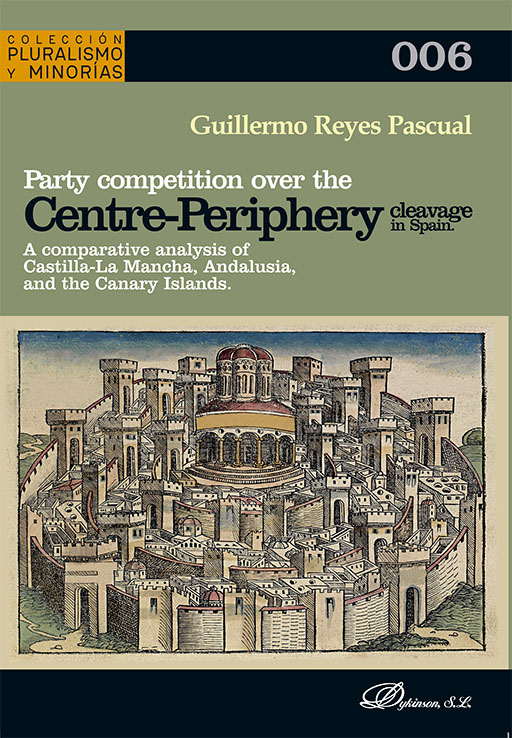Reyes Pascual, Guillermo, Party competition over the centre-periphery cleavage in Spain. A comparative analysis of Castilla-La Mancha, Andalusia, and the Canary Island, Colección Pluralismo y minorías, Dykinson, Madrid, 286 pp. ISBN: 978-84-1170-528-8
Link Dykinson Editorial: https://www.dykinson.com/libros/party-competition-over-the-centre-periphery-cleavage-in-spain/9788411705288/

Distance has always been a factor surrounded by the myth when comprehending political behaviour. Come would say that spatialituy is fixed, and therefore outside the influence of political actors, and others suggest that it is imagined, and consequently, articulated according to concrete political agendas. Regardless of how the concept distance is defined, it is of Paramount importance when trying to understand and analyse how political actors behave. Aroung the world, we can find states that vary greatly in theis size, from extremely small to very large. In these spatial settings, factors like distance are expected to have a Deep impact in how the differet socials cleavages are articulated, ultimately affecting the relations beetween citizens.
Amongst the different social cleavages that could be incluenced by distance, the one that stands out the most is the one relativa to the way in which centres and the peripheries associate with each other. This cleavage is of most impotance in states where the relations between the centres and peripheries have profound political roots. Its croos-sectional effect, affecting both unitary and federal states, is a proof of this. In this study, Spain, as a case where the centre-periphery cleavage is a determining factor is how political actors behave in a multi-level setting, is used to investigate how distance shpaes and adjust all political agendas. In this sense, the purpose is to tap into how political competition is being configurated by the way in which the differet political actor make use of this factor to reinforce their messages and connect with their electorate.
To ensure the robustly of this investigation, the regions of Castilla-La Mancha, Andalusia, and the Canary Islands have been selected to guarantee enough variation in the distance that separates each constituent unit of the centre-periphery cleavage in Spain, having and Autonomous Community per strata: centre, inner-periphery, and outer-periphery. Because the purpose is to explore how distance affects the behaviour of rhe different political actors thay shape the way in wich the centre relates to its peripheries, political parties are employed here as the main unit of análisis, being the greatest exponent of this type of political competition. Applying a qualitative method of analysis, the results show that distance is utilised by parties to shape how they frame the relations between the centre (Castilla-La Mancha) and the periphery in Spain (Andalusia, the inner-periphery, and Canary Islands, the outer-periphery). In addition to these main findings, distance also acts in conjunction with other imporant factors that according to the main literatura, represent crucial elements in party competition, such as pary type and ideology. In summary, this study can help better understand the impacto f distance in the way in which political behaviour is articulated.
Guillermo Reyes Pascual
Licenciado en Derecho por la ULL, tuvo la oportunidad de cursos varios cursos de postgrado en la Universidad Carlos III de Madrid en las materias de Derechos Humanos, Derecho de la Union Europea, y Cooperación Internacional y Pueblos Indígenas. Terminó su doctorado en la Universidad de Kent (Reino Unido),donde actualmente es docente en Políticas y Sociología a la vez que investigador en varios proyectos nacionales e internacionales.
